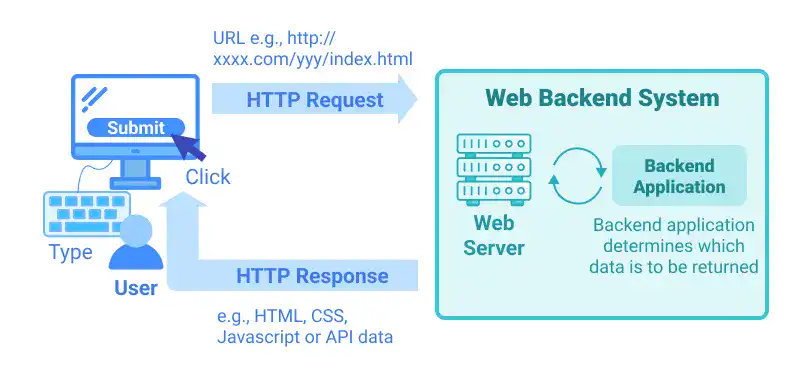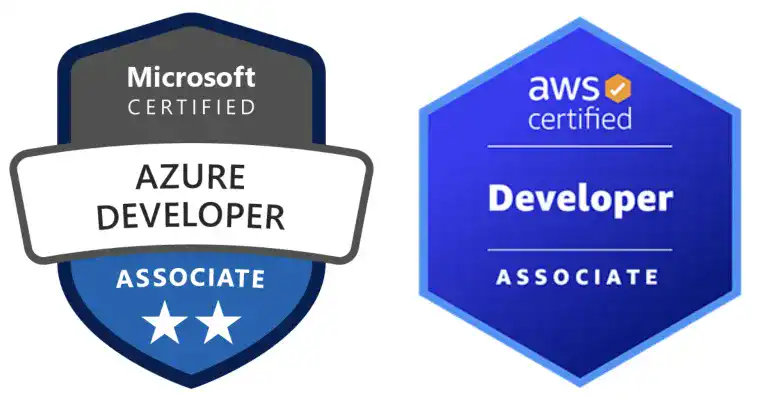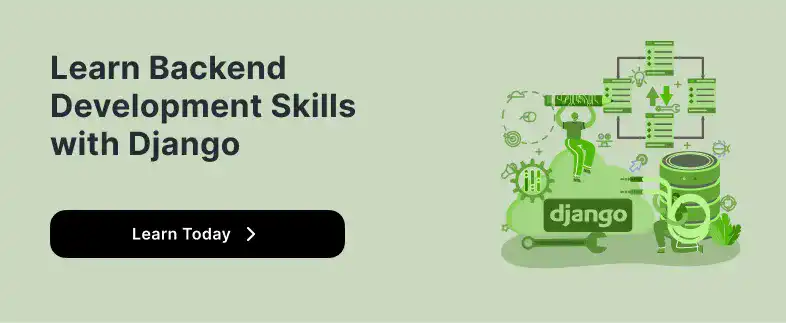TABLE OF CONTENTS
How Do You Get a Back-End Development Job?
Back-end development forms the backbone of web services and applications, handling data management, server configuration, and application logic—tasks that are crucial yet invisible to end users.
As businesses increasingly rely on sophisticated data processing and seamless user experiences, the demand for skilled back-end developers continues to grow. This blog will navigate you through the pathway to becoming a back-end developer and securing a position in this vital tech field.
What Is Back-End Development?
Back-end development, often referred to as server-side development, involves the parts of a website that users don't see. It focuses on databases, scripting, and server architecture, ensuring that everything on the client-side works as expected.
Unlike front-end developers who enhance the interface aspects, back-end developers ensure that the web services are optimized, data is correctly processed, and the application's core functionality operates without a hitch.

What Does a Back-End Web Developer Do?
Back-end developers are tasked with creating the framework that allows web applications to run.
Their key responsibilities include:
- Developing and maintaining the core functional logic and operations of a website. This involves creating data algorithms, core application logic, and data processing features.
- Integrating user-facing elements and database systems. For example, ensuring that the user’s profile information is correctly saved and retrieved.
- Building APIs that serve data to other applications. This allows different applications to communicate effectively, enhancing functionality across platforms.
- Ensuring high performance and responsiveness of requests to the front-end. This includes optimizing database interactions and server configurations.
Back-End Developer vs. Back-End Engineer
While back-end developers and back-end engineers share similar technical skill sets, their roles and responsibilities often differ in scope and leadership. A back-end developer primarily focuses on building specific applications and features, like a teacher who guides students through individual subjects.
In contrast, a back-end engineer takes on a broader role, similar to a school principal, overseeing the strategic planning and implementation of technology infrastructure. They not only contribute to development tasks but also coordinate across departments to ensure that the architectural and operational decisions align with the organization's goals.
Market Demand for Back-End Developers
The demand for back-end developers, particularly those with skills in AI and data analytics, continues to grow as businesses increasingly integrate these technologies into their operations.
Back-end developers play a critical role in designing and maintaining the architecture necessary for efficient data processing and AI algorithm integration, which are essential for enhancing business intelligence, automating processes, and providing deeper insights into customer behavior and operational efficiency.
Statistical projections indicate a robust job market for these roles. For instance, employment of data scientists, who often need strong back-end development skills, is projected to grow by 35% from 2022 to 2032, much faster than the average for all occupations (Bureau of Labor Statistics). This growth is a reflection of the increasing importance of data analytics and AI in backend development, where managing and analyzing large datasets and implementing machine learning models are critical.
Moreover, the rapid adoption of technologies requiring back-end development expertise is pushing the market's boundaries. For example, the demand for Django, a backend framework, grew by 126.12% in recent times, indicating a significant shift towards more scalable and secure back-end solutions (HackerRank).
The global market for AI data management, which plays a significant role in back-end development, is witnessing remarkable growth. This sector is crucial for managing the data necessary for AI applications, from storage and organization to analysis and interpretation, ensuring that AI systems function efficiently and effectively.
The Global AI Data Management Market size was valued at approximately USD 20.8 billion in 2022 and is projected to grow to USD 100.1 billion by 2030 (KBV Research).
This exponential growth underscores the increasing reliance on AI and big data technologies, which require robust back-end systems to handle complex data operations. Back-end developers with expertise in AI data management are therefore becoming increasingly indispensable in industries ranging from healthcare to finance, where the ability to process and analyze large volumes of data accurately and swiftly is critical. The integration of AI into these systems not only enhances operational efficiencies but also drives innovation, making it a key area for developers looking to impact the technological landscape significantly.
Essential Steps to Become a Back-End Developer
Becoming a back-end developer requires a series of strategic steps that equip you with the necessary skills, experience, and technical know-how
- Understand the Role: Grasp the fundamental operations that back-end developers handle, the problems they solve, and the typical projects they work on.
- Acquire Necessary Skills: Gain expertise in server-side languages such as Python, Ruby, Node.js, and frameworks like Django, Rails, and ASP.NET Core. Mastery of database management systems, and understanding server architectures is crucial.
- Formal Education vs. Self-Taught: While a degree in computer science is advantageous, many back-end developers have succeeded through self-study or coding bootcamps. Our Digital Skill learning courses, including titles like Chapter 1. Django Key Concepts, provides an excellent starting point.
- Build and Showcase Your Portfolio: Develop a portfolio that includes API services, complex data management tasks, and integration examples. This showcases your capability to handle real-world back-end tasks. Our Digital Skill learning courses will provide you with the necessary step by step tools to create your first CRUD web application.
- Engage with the Community: Participate in coding challenges, contribute to open-source projects, and join developer communities to learn from peers and gain exposure to different coding styles and projects. This will not only enhance your coding skills but also help you stay updated on industry trends and technologies.
- Apply for Internships: Gain practical experience and make industry connections through internships, which can often lead to full-time employment opportunities. Internships provide a platform to apply your theoretical knowledge in real-world settings and understand the day-to-day responsibilities of a back-end developer.
- Prepare for the Job Market: Refine your resume, practice for technical interviews, and leverage platforms like LinkedIn to connect with industry professionals. Ensure your resume highlights your back-end skills, projects, and any relevant experience that can appeal to potential employers.
- Certify Your Skills: Consider obtaining certification in key technologies used in back-end development. Certifications such as Microsoft’s Certified: Azure Developer Associate or AWS Certified Developer can make your resume stand out and validate your technical abilities to employers.

By following these steps, you'll be well on your way to launching a successful career in back-end development. Explore our Digital Skill learning courses for deeper insights and guidance on each step, and start your journey towards becoming a proficient back-end developer.
Why Choose a Career in Back-End Development?
A career in back-end development is not only challenging and fulfilling but also offers lucrative job opportunities. Back-end developers play a critical role in building, scaling, and maintaining web applications. Their work directly impacts the functionality and usability of virtually all software products, which is essential for business operations and user satisfaction.
Learning Resources
If you’re ready to embark on your journey to becoming a back-end developer, explore the extensive resources available at D-Libro. Our digital library is packed with e-books, courses, and comprehensive guides designed to take you from basic programming to advanced back-end development.
Enhance your skills today at D-Libro and pave your way towards a successful career in back-end development. Dive into our Digital Skill learning courses, starting with foundational topics and advancing through more complex subjects, to ensure you’re well-prepared for the challenges and opportunities of a back-end development career.
What are the Next Steps?
The journey to becoming a back-end developer is a continuous learning process that involves mastering various programming languages, understanding server and database management, and keeping up with new technologies. By following the steps outlined above and engaging with educational resources from D-Libro, you can build a solid foundation for a successful career in back-end development.
Ready to deepen your understanding and refine your skills? Visit D-Libro to discover our full range of educational materials. With D-Libro, you gain access to the tools and knowledge necessary to excel in your career and stay ahead in the rapidly evolving tech landscape. Start learning today and transform your potential into success.


